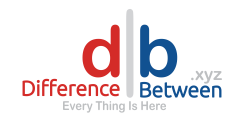Language is a system composed of signs that serves to transmit information.
The signs that make up language can be sonorous (such as the sounds that make up words), gestural (body language), written (letters or symbols) or iconic (images). Depending on the type of signs used, there are different types of languages:
When human beings communicate, they use these signs to create a message, which will then be interpreted by another person or group of people.
1. Verbal language
It is a type of language that requires the use of words to establish communication. Depending on the type of signs used, verbal language can be of two types: oral or written.
1.1 Oral language
It requires the use of sound signs, which are the sounds we make to form words. It is characterized because it is learned naturally, by being in contact with speakers of the same language.
An example of spoken language is when we send a voice note.
1.2 Written language
It is a system composed of alphabetic (letters) and numeric graphic signs. This system is characterized by rules that must be learned in order to use the signs correctly and create messages.
An example of written language is when we write an e-mail.
2. Non-verbal language
It is a type of language that uses resources such as images, facial expressions, or body postures to create a message. It completely dispenses with the use of spoken or written words and is considered of vital importance in the communicative process because it can be a valuable complement to verbal language, although it can function without it.
Nonverbal language is classified into:
2.1 Iconic language

These are all non-verbal signs composed of images (icons). For the communicative process to take place, this type of language must be consistent, that is, the icons must have specific characteristics that can be understood by as many people as possible.
An example of iconic language is traffic signs, which can be understood by any driver almost anywhere in the world, even if he does not speak the local language.
2.2 Facial language
It refers to the set of expressions that we make with our face, intentionally or unintentionally, to communicate a message. Although each person may have his or her own expressions, there are certain facial gestures that are universal and therefore facilitate the communicative process.
For example, when we are happy we tend to smile and squint our eyes in such a way that small wrinkles form around our eyes. On the other hand, when we are afraid we tend to open our eyes wide because it is a response of the nervous system to help us widen our visual field and detect danger.
2.3 Body language

Also called kinesics, these are body movements or postures that communicate a specific message. These expressions may vary according to culture and the interpretation of the receiver of the message, however, there are gestural signs that are shared almost everywhere in the world.
For example, the movement we make with our head as a way of saying yes, or squinting our fist showing our thumb to express that we agree with something or that everything is fine.
2.4 Tactile language (haptics)

Haptics is a non-verbal language modality based on the stimuli we perceive through touch (sensations, textures, temperature, movement, pressure, etc.).
For example, in many cultures, especially in the West, a tap on the shoulder of the interlocutor expresses a certain degree of confidence. Braille for the visually impaired is another example of tactile language.
2.5 Proxemics
Proxemics is a type of nonverbal language referring to the use of our personal space. It is expressed in a system of gestures, postures or movements with which we manage the distance between our body space and that of our interlocutor.
Proxemics is influenced by personal beliefs, social and cultural factors, and for this reason, it depends not only on the sender of the message, but also on the interpretation made by the interlocutor and the value or meaning that the gesture has in that culture.
For example, in many Latin American countries it is common for the distance between the sender and the receiver to be very short. But in other cultures this gesture can be interpreted as an invasive or even aggressive attitude.
2.6 Paralanguage
It is a type of nonverbal language that takes into account the quality of the voice. It is composed of tone, volume, accent, pauses, onomatopoeias, silences and interjections.
Paralanguage does not have to do with what is said, but with the way in which the message is communicated. Therefore, it is a complement to oral verbal language.
For example, when we expect an affirmative answer from our interlocutor and he answers yes but in a very low tone, it can be interpreted as indecision.
3. Natural language
It is the communication system that we learn innately, initially from the family environment and then as a result of social interaction. Natural language, in other words, is our mother tongue and includes verbal and nonverbal expressions.
An example of natural language is the words “mama” and “dada”, which in many cases constitute the first oral expressions of babies, as a result of their mother tongue learning process.
4. Artificial language
Also called formal languages, they are communication systems created by human beings to accurately express ideas of specific areas of knowledge, so they usually have their own signs and rules. Some types of artificial language are:
4.1 Mathematical language
It is the communication system designed to express mathematical concepts. It is composed of alphanumeric signs (letters and numbers), as well as a series of symbols generated to represent mathematical operations (+, -, x, %, =, etc.).
For example, the equation 3 (x + 4) – 2 (2+2x) = 3 (x – 6x +12+2) is a mathematical language expression.
4.2 Programming language

It is the system that makes it possible to create the instructions that regulate the operation of the physical and logical components of a computer.
The instructions or sequences, called algorithms, are expressed with binary code, a system that requires the use of the values one (1) and zero (0).
Examples of programming language would be Javascript, C++ or Perl.
4.3 Music language
It is a type of artificial language designed for composing, reading and interpreting musical compositions. It has its own signs and rules for reading and writing.
An example of the expression of musical language is sheet music, where you can see the signs used to graphically represent the duration of a note.
5. Animal language

This refers to the system of signals that animals use to communicate. Although it is often referred to as “animal language,” the designation is incorrect, since language is a communication system unique to humans. The correct term is animal communication system.
This includes visual (skin color, fur or plumage), auditory (characteristic sounds) or olfactory (odors) signals.
An example of animal communication systems are the different types of whale sounds (colloquially called “songs”), which are used to communicate in different events, such as mating or migration.
See also:




